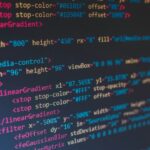By: Tom White
When most of us think of cybersecurity, we imagine defending systems against hackers trying to gain access to personal information. With the rise of Artificial Intelligence (AI), the field of cybersecurity is changing rapidly. It is a unique stage that requires trepidation and the ability to be humble. With the focus currently on understanding the possible ramifications of AI, we turn to an expert to give us a behind-the-scenes look at how cybersecurity experts are attempting to keep up with the rapidly expanding technology.
Security engineer Sathak Munshi works at Amazon, one of the world’s biggest innovators. He specializes in AI and Machine Learning (ML) security, safeguarding AWS SageMaker, an industry leader in cloud services for AI/ML infrastructure. Munshi’s work within security on many levels allows him to give us insights into the future of AI/ML and securing against the novel issues that arise from it.
The Basics
While AI technology isn’t new, it is exploding in popularity. With this comes new territories that need to be rapidly secured. “Securing AI is wild,” said Munshi. “Attackers get super creative, constantly finding new ways to exploit these systems.” Traditional security threats have become predictable now, and the floodgates have opened again.
“There are ways of prompting AI through an image or text, with possible hidden commands,” he said. These attacks are hidden in plain sight and can be hard to spot, but they cannot all be summarily blocked. AI functions on input, and to cut that off would hurt the performance of the technology.
On top of the new unseen security factors, there is also the sheer scale of it all. “We need to protect millions of requests in real-time without slowing things down,” said Munshi. No longer can experts wait to analyze data to find the security risks, and it adds an extra “head-scratching” layer to securing these models.
While adjusting to the new technology is daunting, the size of the expansion keeps security experts up at night and, as such, how quickly issues can escalate. “In traditional apps, a breach might leak some data, but with powerful AI, the consequences could be far more unpredictable,” said Munshi. These issues could be as simple as AI solving a problem in a way that doesn’t align with the initial goals finding unintended shortcuts that can lead to potentially disastrous results.
So, how are experts looking to combat this astronomical rise and the security problems that come with it?
A Novel Approach
“The coolest part of the job is it requires a unique skill set,” Munshi said, “you need to think like both a data scientist and a security expert.” Having a well-rounded understanding of the models, how they work, and their training data, as well as being wary of potential attacks, is a full-time job.
During his time at Amazon, Munshi has worked to help protect valuable AI/ML services that provide powerful tools for businesses to understand their data. “Our focus at Amazon is ensuring that the entire AI system is reliable and trustworthy: from how it’s trained to how it’s used,” said the security engineer.
While traditional breaches involved people breaking into the system, now there are more concerns for ‘adversarial’ attacks. “These attacks are about tricking the AI with seemingly harmless inputs, causing it to produce wrong or biased results.” To stay on top of this Munshi must approach each case with an open mind.
Sometimes, these data breaches might be accidents, such as AI memorizing sensitive data during training and relaying this information to users. To navigate these new waters, Munshi works on ensuring the models make decisions that are reasonable regardless of the situation.
This involves approaching each issue with a realistic viewpoint. “Some people worry about far-fetched scenarios, while others downplay the unique challenges these systems present,” said Munshi. He believes “we need to strike a balance and address the real, immediate security concerns.”
The Future
AI/ML is advancing rapidly, providing incredible new resources and previously unseen security risks. Sarthak Munshi and other security experts attempt to catch up and become proactive instead of reactive. This requires an astute eye for every aspect of these AI models and a clear goal.
“At Amazon, balancing AI security with innovation is like navigating in a strong wind,” he said. “You need to find the right course to stay on track and avoid danger.” By setting clear boundaries and encouraging exploration, technological and security advancements can be made in lockstep.
To expound on Munshi’s metaphor, we are heading into uncharted waters. We must proceed cautiously as we guide ourselves through the sometimes turbulent tides surrounding such a revolutionary piece of technology. He believes that security measures should be viewed as augmenting progress and innovation rather than stunting it. He states, “By providing clear guidelines and easy-to-use safety features, we help companies confidently deploy AI in their workflows.”
While the future of AI/ML is yet unknown, its capabilities seem nearly limitless. We both must embrace and understand this technology, giving it parameters to make our lives easier. We can all start by listening to experts such as Sarthak Munshi, who has dedicated his education and career to developing cybersecurity solutions. His job at Amazon positions him at the forefront of innovation, and both his problem-solving and dedication to learning have been invaluable. As we cautiously approach this exciting new future, it is important to have people like Munshi keep a guarded eye out for all of us.
Disclaimer: The views expressed in the article are those of the author and expert Sathak Munshi and do not reflect the official stance of Amazon or any other organization mentioned. The cybersecurity landscape rapidly evolves, and the information shared may change as new threats and innovations arise. Readers should consult cybersecurity professionals for the latest insights and solutions.
Published by Elle G.

















